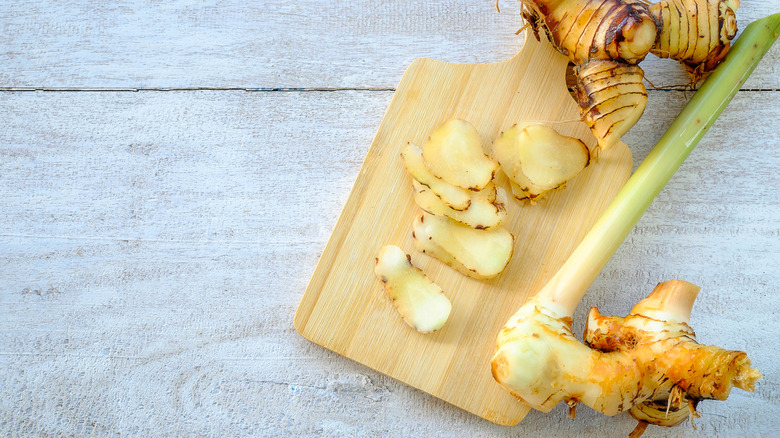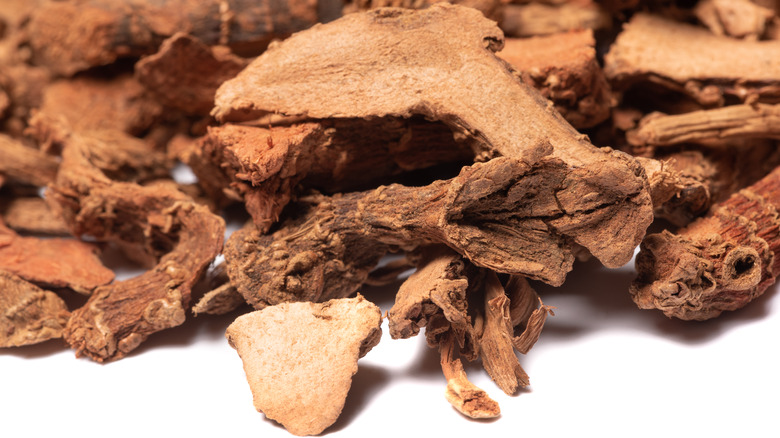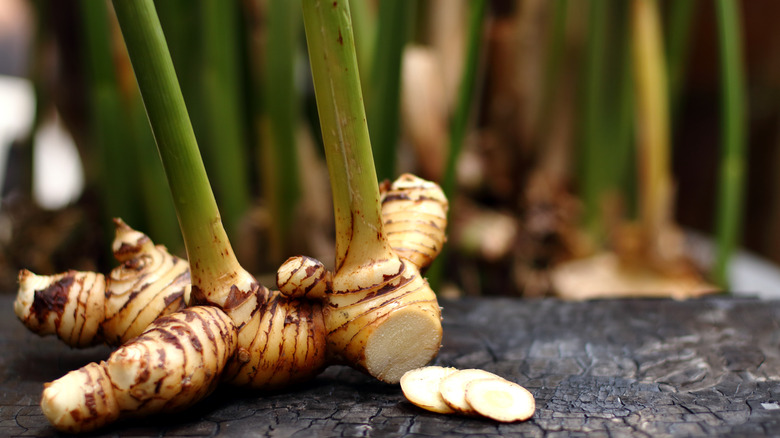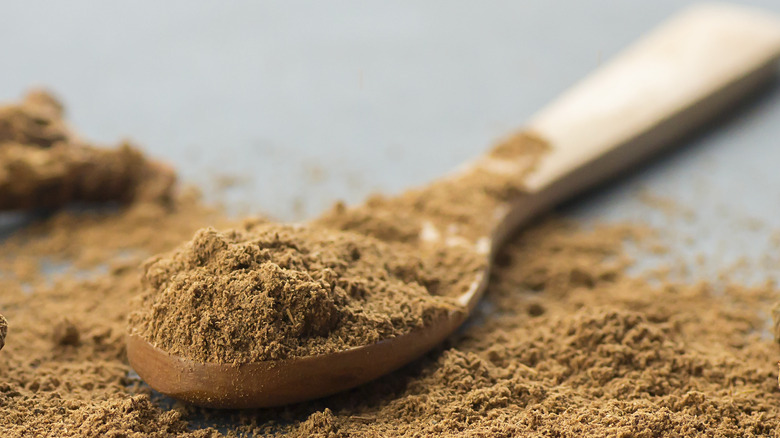The 3 Types Of Galangal, Explained
When it comes to Asian spices, herbs, and seasonings — there's a world of bold flavor, rich texture, and (often) untapped secrets that can bring your cooking and favorite dishes to a whole new level. One of the most beloved ingredients used in many Thai, Indian, and Malay cuisine is the root galangal. Often confused with ginger, galangal has similar characteristics, benefits, and flavor. According to Smithsonian Magazine, galangal (sometimes referred to as galanga) is a part of the rhizome family (like ginger). It can have a sweet, tangy, and even peppery taste — depending on the type of galangal used in your dish.
Yes, galangal root has several varieties — each differing slightly in taste, foraged in different regions, and used for other purposes. The three variations of galangal include lesser galangal, greater galangal, and light galangal. Learn how each root can play a part in upgrading your next dish and potentially improving your overall health.
Lesser galangal: a peppery kick.
Originating in China, lesser galangal is famous for its flavor profile, which has a pepper-forward taste. Sometimes referred to as Alpinia officinarum, lesser galangal is known for adding a punch of tartness to any dish. An ingredient of all traders, lesser galangal can be used as both a food enhancer and for medicinal purposes. When it comes to cooking, lesser galangal can be peeled, sliced, or grated. Using the aromatic root for soups or stir-fry is popular to make your dish spicy. The root's characteristics are close to ginger but can also have subtle hints of cardamom and cinnamon.
Beyond the kitchen, lesser galangal can be used in tablet or powder form to help with digestive problems such as bloating or GI upsets (via Live-Native). Lesser galangal also makes for a great tea to drink ten minutes before a big meal to help aid in digestion.
Greater galangal: more than just a beautiful flower.
Striking in visual appearance and taste, greater galangal can be found throughout Southeast Asia, particularly in Indonesia, Malaysia, and parts of Benegal and southern India. Sometimes referred to by the scientific name of Alpinia galanga Willd, greater galangal consists of essential oils like methyl cinnamate and cineol — giving it a similar taste to ginger. While milder in flavor than lesser galangal, greater galangal has a similarly peppery taste. Visually, the green rhizome (root) sprouts beautiful flowers and foliage making it aesthetically pleasing to the eye.
When it comes to cooking with greater galangal, the root is used as a common ingredient in popular Indian and Thai dishes. It can be used as a cardamom substitute, and the leaves are even used in dishes as well. Like lesser galangal, greater galangal has also been used for medicinal purposes, specifically when it comes to assisting in some respiratory problems, according to Science Direct.
Light galangal: a tastebud (and health) kick
The last type of galangal is light galangal, with the scientific classification of Alpinia speciosa. This plant is native to the Eastern Archipelago off of Southeast Asia, and of the three galangal varieties is most similar in flavor profile to its cousin, ginger. Alpinia speciosa wows natives and the globe alike with its excellent health benefits and the spicy zing it brings to their dishes. It's believed that light galangal can be used as an effective treatment for staphylococcus aureus due to its antimicrobial and antioxidant properties. In fact, the National Institute of Health looks to completely exhaust the medical benefits behind Alpinia, as it can be linked to many biological advancements in human medicine.
It's safe to safe that keeping galangal around your home benefits your body in every sense of the world – from a delicious ingredient amping up your culinary dishes to a tea mixture to help in various health benefits.



